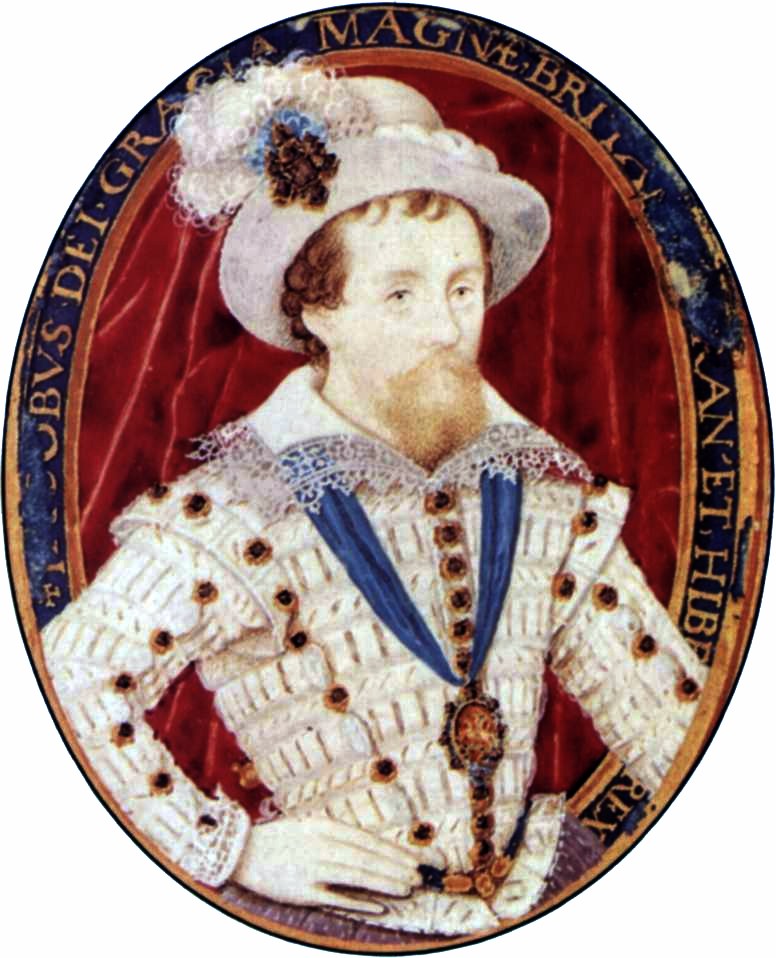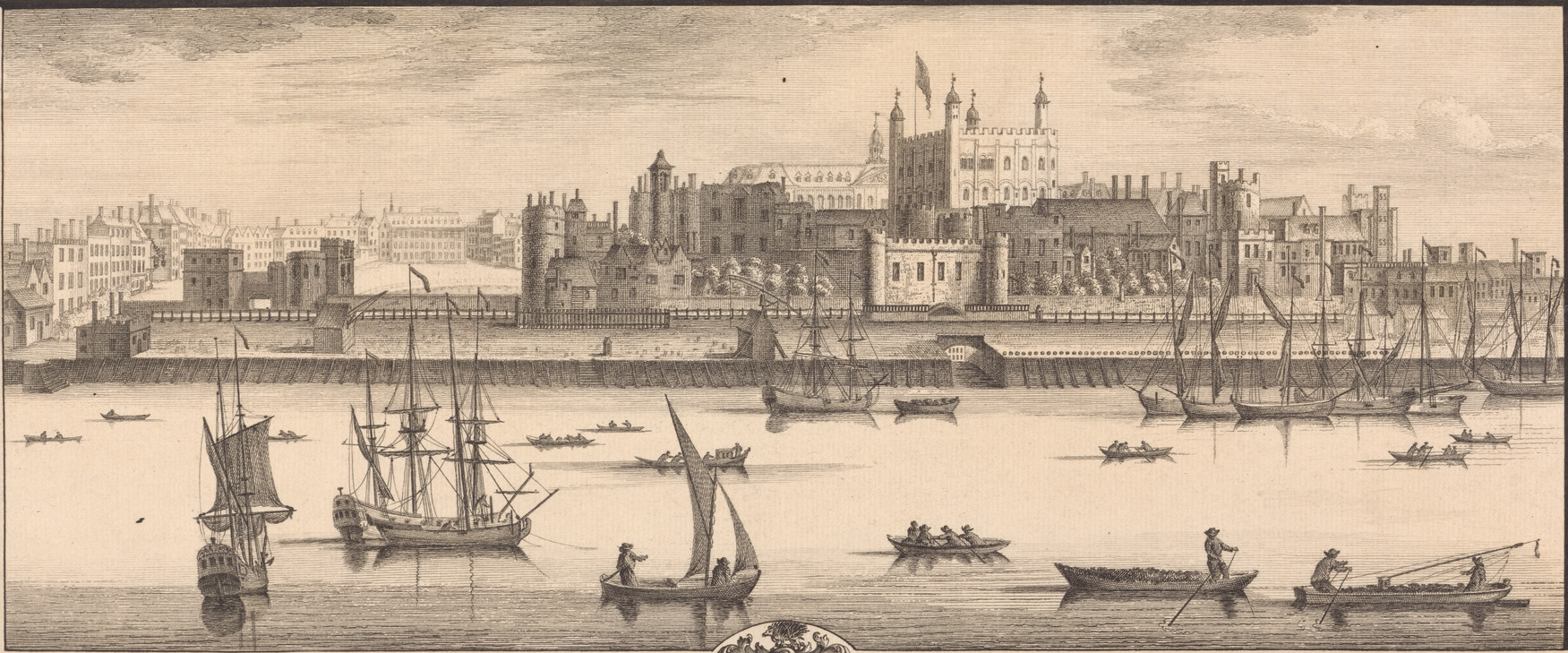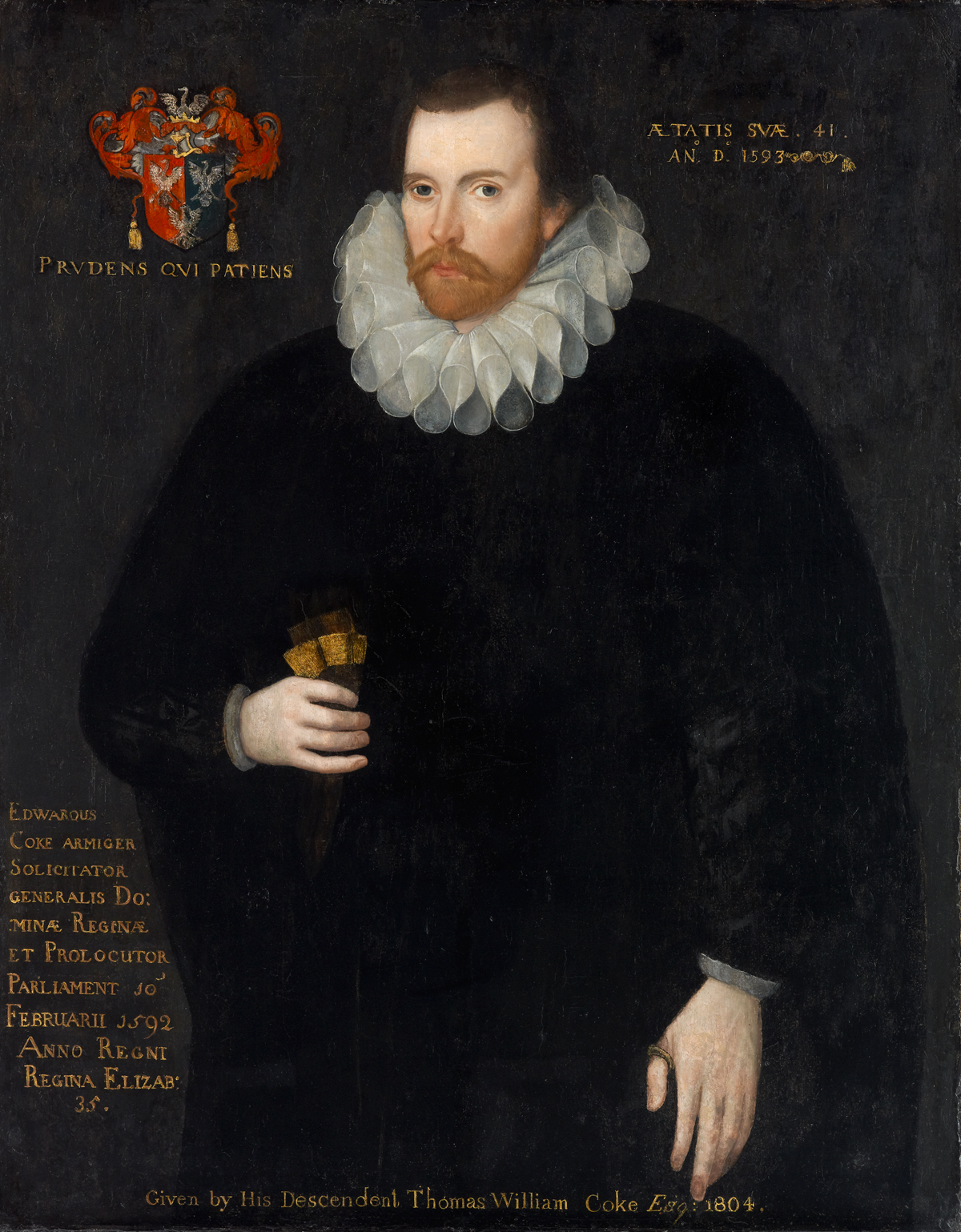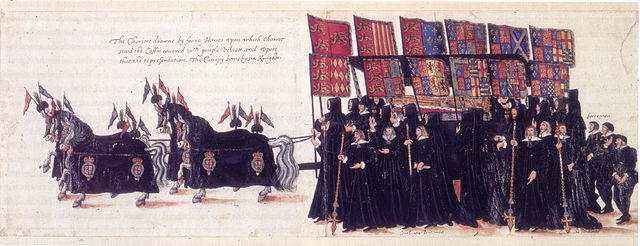Finances
 |
| Prince Henry |
In May 1606, despite a pension of £800 per annum from the
king, Arbella’s debts were mounting. She wrote to Cecil;
‘I
lately moved his Majesty to graunt to me such fees as may arise out of his
seale which the Bishops are by the law to use……I am inforced to make somme
suite for my better support and maintenance……so I must earnestly entreate your
Lordship to further this my suite.’[i]
James was not moved to grant Arbella’s petition although he
was often profligate with gifts and pensions. In a court where the ethos of
conspicuous consumption ruled, display was essential. Arbella was not the only
courtier short of money; despite his huge income Secretary Cecil spent nearly
double his income.
James wore a new pair of gloves every day and money was
poured out upon the king’s favourites; Lady
Frances Howard was given £10,000 of jewellery[ii] upon her marriage to the
King’s favourite, Robert
Carr. Fabulous amounts were spent on the wardrobe of the 13 year old Prince
Henry and courtiers were quick to follow suit.
 |
| Robert Carr |
Food became ever more elaborate and costly and drinking
large amounts of alcohol became commonplace. After a banquet to honour Queen
Anne’s brother, King
Christian IV of Denmark, the ladies of the court were so drunk that a
representation of King Solomon in the temple ended with the lady playing the
Queen of Sheba falling at the Danish king’s feet.
On Twelfth Night the queen had ordered the performance of a
masque in her brother’s honour. Arbella performed in the Masque of Beauty[iii] wearing clothing and
jewels estimated to be worth over £100,000[iv]. Anyone attending the
revels had to be able to throw £300[v] on the gaming table.
In 1608, still desperately in need of money, Arbella petitioned
for the right import Irish hides and to nominate the sellers of Irish wine in
Ireland. In October there was talk of putting in a claim for the Lennox lands taken
by Queen Elizabeth, but nothing came of these grandiose demands. But however
short of money she was to keep up with court fashion, Arbella was able to buy a
small house in Blackfriars for £200[vi], where she could retire
from court.
Losses
 |
| Christian IV of Denmark |
Arbella’s relative the Countess of Nottingham thought that
King Christian had informed her husband that she was cuckolding him[vii]. Arbella intervened to
sort out this storm in a tea cup. That she managed to smooth things over meant
that Arbella had a conduit to the Danish court and she strove to keep the
connection to Christian alive with over effusive letters and small gifts.
A death, hardly unexpected in an eighty year old lady, must
have upset Arbella despite the recent coolness in their relationship. Bess of
Hardwick died on 13th February 1608. Gilbert Talbot wrote to Robert
Cecil;
‘The
old lady…..had that blessing of sense and memory, even to the end.’[viii]
Immediately upon receipt of the information Arbella set out
for Hardwick as Cecil informed Gilbert. She stayed for several weeks, while
Bess laid in state; Arbella left before the funeral. While at Hardwick Arbella
wrote to King Christian;
‘If at this time I shall seem not to
have satisfied my duty unto you, I ask and implore that your most illustrious
Majesty attribute this to my grandmother the Countess of Shrewsbury who, having
very recently and sadly died, surrendering her wishes for her own property and
me.’[ix]
Bess had died fully aware of what she was doing, having made
a final alteration to her will on the 4th February, deleting a
bequest to Arbella.
At the beginning of 1608 Arbella was requested to send her
lutenist Thomas Cutting[x] to replace John Dowland at the Danish
court. It was a request she could not refuse and Arbella mourned her loss;
‘Although
I know full well how more easy it is for so great a prince to command the best
musicians of the world than for me recover one not inferior.’[xi]
In December 1608 Arbella fell ill with the pox; she was
looked after by a Lady Skinner, who apparently took great pains to look after
her patient. With Lady Skinner’s help Arbella overcame the disease. In the
summer Arbella went north to stay with Gilbert and Mary, a visit that
culminated in Arbella’s grand tour; from London she went to see Gilbert and
Mary and then Chatsworth and Buxton[xii]. Arbella spent £300[xiii] on the trip.
Marriage
%2C_Attributed_to_Gilbert_Jackson_(1622_-_1640).jpg/350px-William_Seymour%2C_Marquess_of_Hertford%2C_later_Duke_of_Somerset_(1588-1660)%2C_Attributed_to_Gilbert_Jackson_(1622_-_1640).jpg) |
| William Seymour |
Arbella secretly married William
Seymour[xiv],
thirteen years her junior, on 22nd June 1610. It would appear that
Arbella was the prime mover in the marriage. Despite having already been
censured by the king for entertaining a marriage without his consent on 2nd
February, and despite William having promised not to rekindle the relationship,
Arbella and William became engaged in her chamber at Whitehall.
‘The
Lady Arbella who (as you know) was not long ago censured for having without the
king’s privity entertained a motion of marriage, was again within these few
days was apprehended in the like treaty with the Lord Beauchamp’s second son, and both were called
and examined at the court about it.’[xv]
The marriage of his only cousin Arbella to William[xvi], another descendant of
Henry VII did not please James. His policy was to keep Arbella unmarried and
childless to protect his children’s inheritance. Only days before Arbella had
performed in a masque with the queen as part of the celebrations of the
investiture of the seventeen year old Prince Henry as Prince of Wales.
Imprisonment Drear
 |
| Tower of London |
On 8th July William was sent to the Tower and the
following day Arbella was given into the custody of Sir Thomas Parry,
Chancellor
of the Duchy of Lancaster. Arbella was concerned about her servants, many
of whom had been with her for years; Mary and Gilbert undertook to look after
them.
Within a month Arbella’s body started bloating and her
dresses needed taking out. Arbella thought she was pregnant[xvii]. Queen Anne, Prince
Henry and Cecil all advised James to be lenient. By December, despite countless
letters from Arbella, James was still determined to keep Arbella under lock and
key.
Arbella wrote to James protesting her loyalty
‘I
have long desired to merit of your Majesty…….and though your Majesties neglect
of me [and] my love to this gentleman that is my husband and my fortune drew me
to a contract before I acquainted your Majesty I humbly beseech your Majesty to
consider how impossible it was for me to imagine it could be offensive to your
Majesty.’[xviii]
In January 1611 Arbella was informed that her husband was
sentenced to life imprisonment in the Tower and that she was to be sent north
to Durham.
Vain Protestations
 |
| Sir Edward Coke |
Arbella was driven into a frenzy of letter writing to Sir Edward Coke[xix], Sir Thomas Fleming[xx], Viscount
Fenton and others protesting this move from all that she had known. It was in
vain; the Bishop
of Durham presented himself at Lambeth on 15th March. Arbella
refused to go quietly and the bishop’s men had to carry her out on a mattress.
Arbella was carried to Highgate where she was attended by
her own physician, Dr Moundford. The following day Moundford told the bishop
that Arbella could not be moved. She protested against this sentence writing to
the Privy Council;
‘I
protest I am in so weak a case as I verily think it would be the cuase of my
death to be removed any whither at this time though it weare to a place of my
likeing. My late discomfortable journey(which I have not yet recovered)had
almost ended my days.’[xxi]
On 21st March the Bishop of Durham was commanded
by the king to move his charge to Barnet. Once again Arbella was carried out on
a litter. The Bishop spoke to the king about Arbella’s plight, but James was
unmoved. Arbella wrote to Fenton;
‘I
can neither gett clothes nor posset ale for example nor anything but ordinary
diett and complement fitt for a sicke body in my case when I call for it not so
much as a glister[xxii]……that unlesse I may be
suffered to have those about me that I may trust.’[xxiii]
Although James was determined to have Arbella in Durham he
was persuaded to allow her to stay in Barnet until 5th June, when
she might be fit enough to make the long journey north.
Bibliography
The Early Stuarts – Godfrey Davies, Oxford University Press
1987
King James – Antonia Fraser, BCA 1974
Arbella – Sarah Gristwood, Bantam 2004
Robert Cecil – Alan Haynes, Peter Owen Publishers 1989
Bess of Hardwick – Mary S Lovell, Abacus 2006
The Letters of Lady Arbella Stuart – Sara Jayne Steen ed,
Oxford University Press 1994
www.wikipedia.en
[i]
The Letters of Lady Arbella Stuart - Steen
[ii]
In 2013 the
relative: real
price of that
commodity is £1,614,000.00 labour value of that commodity is £28,080,000.00 income
value of that
commodity is £55,180,000.00 www.measuringworth.com
[iv]
In 2013 the
relative: real
price of that
commodity is £16,650,000.00 labour value of that commodity is £266,500,000.00mincome
value of that
commodity is £564,000,000.00 www.measuringworth.com
[v] In 2013 the
relative: historic standard of living value of that income or wealth is £49,940.00 economic status value of that income or wealth is £1,692,000.00 economic power value of that income or wealth is £12,070,000.00 www.measuringworth.com
[vi] In 2013 the
relative: real price of that
commodity is £33,290.00 labour value of that
commodity is £533,100.00 income value of that
commodity is £1,128,000.00 www.measuringworth.com
[vii]
Christian’s English was not very good
[viii] Bess of Hardwick - Lovell
[ix]
The Letters of Lady Arbella Stuart - Steen
[xi]
Arbella - Gristwood
[xii]
Developed as a spa by the former Earl of Shrewsbury,
Mary, Queen of Scots had taken the waters there
[xiii]
In 2013 the
relative: historic standard of living value of that income or wealth is
£48,850.00
economic status value of that income or wealth is £1,482,000.00 economic power value of that income or wealth is £10,480,000.00 www.measuringworth.com
economic status value of that income or wealth is £1,482,000.00 economic power value of that income or wealth is £10,480,000.00 www.measuringworth.com
[xiv]
Later Duke of Somerset
[xv] Arbella - Gristwood
[xvi] His Great-Great Grandmother was Princess Mary,
youngest child of Henry VII
[xvii]
Gristwood believes this may have been a symptom
of porphyria as, unless the couple had already anticipated their marriage, the
child in the womb would have been too small to cause any swelling
[xviii]
The Letters of Lady Arbella Stuart - Steen
[xxi]
The Letters of Lady Arbella Stuart - Steen
[xxii]
Enema
[xxiii]
The Letters of Lady Arbella Stuart - Steen




.jpg/390px-Robert_Cecil%2C_1st_Earl_of_Salisbury_by_John_De_Critz_the_Elder_(2).jpg)

